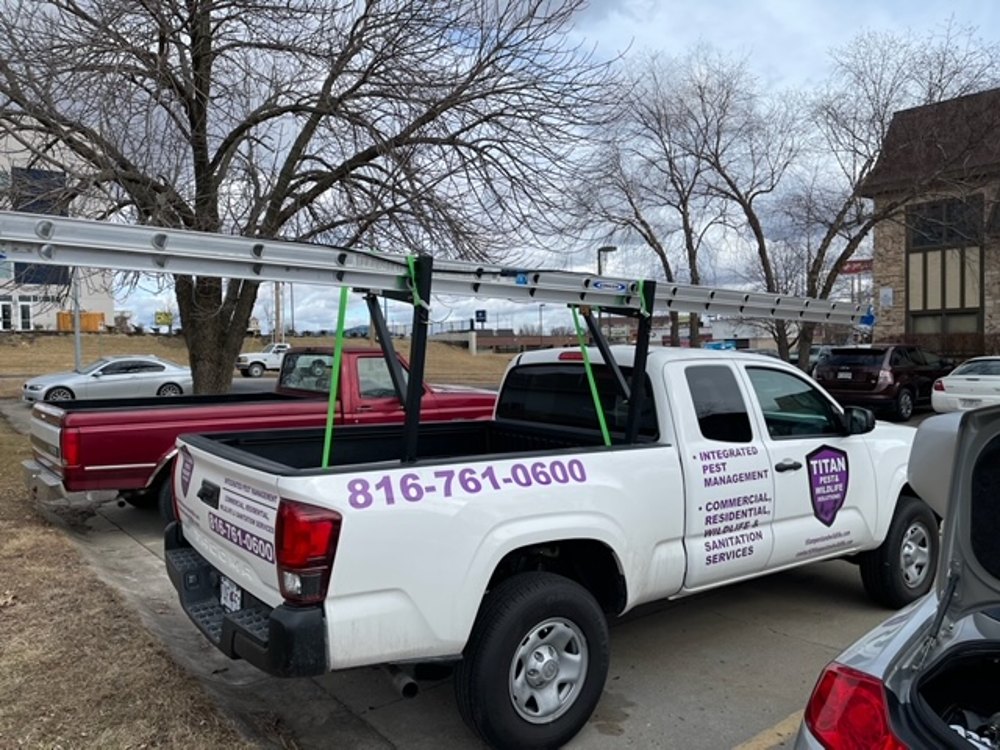Churches are unique buildings. Their architecture, age, and layout make them different from homes or offices. Tall ceilings, hidden crawl spaces, and unused rooms provide numerous hiding places for pests. Churches also often have large kitchens, fellowship halls, and storage areas where food and supplies are kept, which can attract rodents, insects, and birds.
Not to mention, many churches are older buildings. Cracks in walls, gaps around doors, and aging roofs let pests get inside. Some churches are also open to the public all week, which means doors and windows are often used. This increases the chance that pests will find a way in. Even the landscaping around a church, such as shrubs, trees, or bird feeders, can bring pests closer to the building.
Simply put, church pest control is different from residential and commercial pest control.

Common Pests in Churches
Churches face a range of pest problems. Each type of pest brings its own risks and challenges.
Here’s what you might find:
- Rodents like mice and rats are common in churches. They have a bit of chewing through wood, wires, and insulation. This can cause property damage and even fire hazards. Rodents also leave droppings and urine, which are health risks for anyone using the building.
- Pigeons and sparrows, among other types of birds, often nest in steeples, bell towers, or roof spaces. Their droppings are unsanitary and can damage stone, wood, and metal. Birds sometimes bring mites and other parasites with them.
- Insects are another concern. Ants, cockroaches, and spiders can infest kitchens and storage rooms. Wood-boring insects like carpenter ants and beetles threaten the structure of older buildings. Moths and beetles can damage stored fabrics, altar cloths, or vestments.
- Bats sometimes roost in attics or belfries. Their droppings, called guano, are a health hazard and can cause stains and odors.
How Pests Threaten Sacred Spaces
Pests do more than make a mess. They can damage the building, put people’s health at risk, and disrupt worship. Rodents and insects chew through wires and insulation, which can cause power outages or fires. Bird droppings erode stone and metal, leading to expensive repairs.
Health risks are serious. Rodent droppings, cockroach debris, and bird guano can trigger allergies and spread disease. If pests get into food storage areas, they contaminate supplies used for community meals or events.
Pests can also harm the reputation of a church. Visitors expect a clean, safe place to worship. Seeing pests or droppings can make people feel uncomfortable or unsafe.
Steps to Prevent Infestations
Just like with everything else in life, prevention is always better than cure.
Churches can take several steps focused on pest prevention to make their buildings less attractive to pests. The first one? Regular cleaning. Sweep up crumbs, wipe counters, and empty trash bins often.
It’s also important to regularly inspect the building for gaps, cracks, or holes. Seal any openings around doors, windows, or pipes. Repair damaged screens and weatherstripping. Check the roof and foundation for signs of wear.
Store food in sealed containers. Don’t leave snacks or supplies out overnight. Clean up after events and make sure kitchen areas are spotless. Remove clutter from storage rooms and closets, since pests like to hide in piles of boxes or unused furniture.
Landscaping matters, too. Trim shrubs and trees away from the building. Don’t let mulch or leaf piles build up near walls. If you have bird feeders, place them a safe distance away from entrances.
Professional Pest Solutions for Churches
Sometimes, prevention isn’t enough. If you see signs of pests, including droppings, nests, gnaw marks, or strange odors, it’s time to act. Professional pest control services offer solutions designed for churches.
A thorough inspection is the first step. Professionals look for signs of pests, entry points, and areas where infestations might start. They use safe, targeted treatments that won’t harm people, pets, or the building. Many services offer non-intrusive options that don’t disrupt worship or events.
Professionals can also set up monitoring systems to track and manage their activities. These help catch new infestations early. Regular follow-up visits help maintain the building’s protection over time.
Protecting Historic and Sacred Buildings
Older churches need special care when it comes to pest control. Haphazardly applied treatments and solutions can damage wood, stone, or stained glass. Professionals should have experience handling such delicate materials, including the use of gentle, building-friendly treatments for historic sites.
Bird control is a good example. Instead of using traps or poisons, professionals might install netting, spikes, or other barriers to keep birds from nesting. For rodents, they may use traps and sealing techniques instead of harsh sprays.
Documentation is another added benefit of working with an experienced pest control company.
These pest control experts can keep records of inspections, treatments, and repairs. This helps church leaders track progress and ensure compliance with any safety requirements.
Summary
Preventing infestations in churches takes regular cleaning, building maintenance, and professional help when needed.
A pest control exterminator offers safe, discreet, and effective solutions tailored to sacred spaces. They use gentle methods for historic buildings and work around church schedules. Ongoing inspections and education help keep pests away for good.
If you want to keep your church safe, clean, and welcoming, don’t wait for a pest problem to get out of hand.
Take steps now to protect your sacred space.

